Sensors for Sustainable Smart Cities: A Review
Abstract
:1. Introduction
2. Literature Review
- Recent (2010–2020) literature was reviewed to ensure a revision of the current state of the art of the technologies applied to smart cities environment; prioritizing papers published during the 2015–2020 period. Figure 1a shows the distribution of the years of publications of the revised papers for this review;
- Among the selected literature for each section, the most cited papers, including journal articles and conference proceedings were revised extensively. Figure 1b presents the distribution of the number of references with an increasing number of citations of the revised literature. Papers from Q1 and Q2 journals were given priority over Q3 and Q4 journals; as well as journals with impact factors higher than 1.0. Figure 1 shows (c) the quartiles, and (d) journal impact factor of the revised papers in this this review. Additionally, Figure 2a shows the type of references (journal, conference proceedings, books, webpages, and theses) selected and its percentage;
- In the six main sectors, preference was given to articles where the main topic was the use of sensors exclusively for the subject evaluated. A wide range of studies from the exploration of theoretical aspects up to practical applications were included. Figure 2b shows the percentage of revised papers under categories “Health”, “Security”, “Mobility”, “Water”, “Waste”, “Energy”, and “Smart Cities”;
- For each of the six sectors, different keywords were used to find relevant literature across each field. A list of keywords used for each section is presented as follows:
- (a)
- Health: Key terms were searched in the publication title, abstract, and keywords, and include: “smart city”, “smart cities”, “sensors”, “wearable sensors”, “body sensors”, “smart health”, “smart healthcare”, “healthcare sensors”, “healthcare applications”, and “internet of things”;
- (b)
- Water: The selection of the articles for the survey was carried out using the keywords “water” AND “sensors” AND “smart cities”;
- (c)
- Waste: The selection of the articles for the survey was carried out using the keywords “waste” AND “sensors” AND “smart cities”;
- (d)
- Mobility: Among the main keywords and combination of keywords used for this search were “mobility” AND “sensors” AND “smart cities”. Other keywords such as “traffic”, “vehicle”, “pedestrian” AND “sensors” AND “smart cities” were also included;
- (e)
- Energy: The following keywords were included in the search: “energy consumption”, “thermal comfort”, “energy-consuming systems”, “greenhouse gas emissions”, “HVAC system”, “lighting systems”, “buildings energy consumption”, “urban space energy consumption”, ”Key Performance Indicators”, “Light Power Density (LPD)”, “alternative energy source”, “smart buildings”, “smart lighting”, “smart citizens”, “ecological buildings”, “virtual sensors”, “BIM modeling”, “energy consumption sensors”;
- (f)
- Security: Keywords from this topic include: “Cybersecurity”, “Sustainable Development”, “Environment Security”, “Society Security”, “Human Security” AND “sensors” AND “smart cities”.
3. Results
3.1. Smart City
3.2. Smart Cities in the World
3.3. Sensors
3.3.1. Sensors for Health Monitoring
3.3.2. Sensors for Mobility Applications
3.3.3. Sensors for Security
3.3.4. Sensors for Water Quality Monitoring
3.3.5. Sensors for Waste Monitoring
3.3.6. Sensors for Energy Efficiency
3.4. Communication Technologies
3.5. Applications
3.6. Study Cases
4. Challenges and Opportunities
5. Conclusions
Author Contributions
Funding
Institutional Review Board Statement
Informed Consent Statement
Data Availability Statement
Acknowledgments
Conflicts of Interest
References
- Calzada, I. Metropolitan and city-regional politics in the urban age: Why does “(smart) devolution” matter? Palgrave Commun. 2017, 3, 1–17. [Google Scholar] [CrossRef] [Green Version]
- Batista e Silva, F.; Freire, S.; Schiavina, M.; Rosina, K.; Marín-Herrera, M.A.; Ziemba, L.; Craglia, M.; Koomen, E.; Lavalle, C. Uncovering temporal changes in Europe’s population density patterns using a data fusion approach. Nat. Commun. 2020, 11, 1–11. [Google Scholar] [CrossRef]
- Joss, S. Future cities: Asserting public governance. Palgrave Commun. 2018, 4, 1–4. [Google Scholar] [CrossRef]
- Pellicer, S.; Santa, G.; Bleda, A.L.; Maestre, R.; Jara, A.J.; Skarmeta, A.G. A global perspective of smart cities: A survey. In Proceedings of the 2013 Seventh International Conference on Innovative Mobile and Internet Services in Ubiquitous Computing, Taichung, Taiwan, 3–5 July 2013; pp. 439–444. [Google Scholar] [CrossRef]
- Bai, X.; Nagendra, H.; Shi, P.; Liu, H. Cities: Build networks and share plans to emerge stronger from COVID-19. Nature 2020, 584, 517–520. [Google Scholar] [CrossRef]
- Staletić, N.; Labus, A.; Bogdanović, Z.; Despotović-Zrakić, M.; Radenković, B. Citizens’ readiness to crowdsource smart city services: A developing country perspective. Cities 2020, 107, 102883. [Google Scholar] [CrossRef]
- Pranggono, B.; Arabo, A. COVID-19 pandemic cybersecurity issues. Internet Technol. Lett. 2021, 4, 4–9. [Google Scholar] [CrossRef]
- He, Y.; Aliyu, A.; Evans, M.; Luo, C. Health care cybersecurity challenges and solutions under the climate of COVID-19: Scoping review. J. Med. Internet Res. 2021, 23, 1–18. [Google Scholar] [CrossRef]
- Ahad, M.A.; Paiva, S.; Tripathi, G.; Feroz, N. Enabling technologies and sustainable smart cities. Sustain. Cities Soc. 2020, 61, 102301. [Google Scholar] [CrossRef]
- Moustaka, V.; Theodosiou, Z.; Vakali, A.; Kounoudes, A.; Anthopoulos, L.G. Enhancing social networking in smart cities: Privacy and security borderlines. Technol. Forecast. Soc. Chang. 2019, 142, 285–300. [Google Scholar] [CrossRef]
- Braun, T.; Fung, B.C.; Iqbal, F.; Shah, B. Security and privacy challenges in smart cities. Sustain. Cities Soc. 2018, 39, 499–507. [Google Scholar] [CrossRef]
- Kadry, S. Safe drive in smart city. Smart Solut. Future Cities 2016, 1–7. [Google Scholar] [CrossRef]
- Moher, D.; Liberati, A.; Tetzlaff, J.; Altman, D.G.; Group, T.P. Preferred Reporting Items for Systematic Reviews and Meta-Analyses: The PRISMA Statement. PLoS Med. 2009, 6, 1–6. [Google Scholar] [CrossRef] [Green Version]
- Yang, L.; Yan, H.; Lam, J.C. Thermal comfort and building energy consumption implications—A review. Appl. Energy 2014, 115, 164–173. [Google Scholar] [CrossRef]
- Gunduz, M.Z.; Das, R. Cyber-security on smart grid: Threats and potential solutions. Comput. Netw. 2020, 169, 107094. [Google Scholar] [CrossRef]
- Zhao, H.X.; Magoulès, F. A review on the prediction of building energy consumption. Renew. Sustain. Energy Rev. 2012, 16, 3586–3592. [Google Scholar] [CrossRef]
- Carli, R.; Cavone, G.; Othman, S.B.; Dotoli, M. IoT based architecture for model predictive control of HVAC systems in smart buildings. Sensors 2020, 20, 781. [Google Scholar] [CrossRef] [Green Version]
- Hancke, G.P.; de Silva, B.d.C.; Hancke, G.P. The role of advanced sensing in smart cities. Sensors 2013, 13, 393–425. [Google Scholar] [CrossRef] [Green Version]
- Benevolo, C.; Dameri, R.P.; Auria, B.D. Smart Mobility in Smart City. In Empowering Organizations: Enabling Platforms and Artefacts; Springer: Cham, Switzerland, 2016; Volume 11, pp. 13–28. [Google Scholar] [CrossRef]
- Zanella, A.; Bui, N.; Castellani, A.; Vangelista, L.; Zorzi, M. Internet of things for smart cities. IEEE Internet Things J. 2014, 1, 22–32. [Google Scholar] [CrossRef]
- Capdevila, I.; Zarlenga, M.I. Smart City or Smart Citizens? The Barcelona Case J. Strategy Manag. 2015, 8, 266–282. [Google Scholar] [CrossRef]
- Sovacool, B.K.; Griffiths, S. Culture and low-carbon energy transitions. Nat. Sustain. 2020, 3, 685–693. [Google Scholar] [CrossRef]
- Yu, D.; Yin, J.; Wilby, R.; Lane, S. Disruption of emergency response to vulnerable populations during floods. Nat. Sustain. 2020, 3, 728–736. [Google Scholar] [CrossRef]
- Ejaz, W.; Anpalagan, A. Internet of Things for Smart Cities: Technologies, Big Data and Security; Springer: Cham, Switzerland, 2019; pp. 1–15. [Google Scholar]
- Okai, E.; Feng, X.; Sant, P. Smart Cities Survey. In Proceedings of the 2018 IEEE 20th International Conference on High Performance Computing and Communications; IEEE 16th International Conference on Smart City; IEEE 4th International Conference on Data Science and Systems (HPCC/SmartCity/DSS), Exeter, UK, 28–30 June 2018; pp. 1726–1730. [Google Scholar] [CrossRef]
- Sanchez, L.; Muñoz, L.; Galache, J.A.; Sotres, P.; Santana, J.R.; Gutierrez, V.; Ramdhany, R.; Gluhak, A.; Krco, S.; Theodoridis, E.; et al. SmartSantander: IoT experimentation over a smart city testbed. Comput. Netw. 2014, 61, 217–238. [Google Scholar] [CrossRef] [Green Version]
- Anthopoulos, L. Smart utopia VS smart reality: Learning by experience from 10 smart city cases. Cities 2017, 63, 128–148. [Google Scholar] [CrossRef]
- Lu, D.; Tian, Y.; Liu, V.Y.; Zhang, Y. The performance of the smart cities in China-A comparative study by means of self-organizing maps and social networks analysis. Sustainability 2015, 7, 7604–7621. [Google Scholar] [CrossRef] [Green Version]
- Joo, Y.M.; Tan, T.B. Smart cities in Asia: An introduction. In Smart Cities in Asia: Governing Development in the Era of Hyper-Connectivity; Edward Elgar Publishing: Cheltenham, UK, 2020; pp. 1–17. [Google Scholar] [CrossRef] [Green Version]
- Useche, M.P.; Carlos, N.S.J.; Vilafañe, C. Medellin (Colombia): A Case of Smart City. In Proceedings of the 7th International Conference on Theory and Practice of Electronic Governance ICEGOV ’13, Seoul, Korea, 22–25 October 2013; pp. 231–233. [Google Scholar] [CrossRef]
- Gaffney, C.; Robertson, C. Smarter than Smart: Rio de Janeiro’s Flawed Emergence as a Smart City. J. Urban Technol. 2018, 25, 47–64. [Google Scholar] [CrossRef]
- Yigitcanlar, T.; Kamruzzaman, M. Smart Cities and Mobility: Does the Smartness of Australian Cities Lead to Sustainable Commuting Patterns? J. Urban Technol. 2019, 26, 21–46. [Google Scholar] [CrossRef]
- Niculescu, A.I.; Wadhwa, B. Smart cities in south east Asia: Singapore concepts-An HCI4D perspective. In Proceedings of the ASEAN CHI Symposium’15, Seoul, Korea, 18–23 April 2015; pp. 20–23. [Google Scholar] [CrossRef]
- Endesa, F. Smart Cities. Available online: https://www.fundacionendesa.org/es/recursos/a201908-smart-city (accessed on 13 November 2020).
- Cities, B. Bright Cities. Available online: https://www.brightcities.city/ (accessed on 13 November 2020).
- IMD Real Learning Real Impact; SCO Observatory. Smart City Index 2020. Available online: https://www.imd.org/smart-city-observatory/smart-city-index/ (accessed on 13 November 2020).
- Wu, L.; Zhi, Y.; Sui, Z.; Liu, Y. Intra-urban human mobility and activity transition: Evidence from social media check-in data. PLoS ONE 2014, 9, e97010. [Google Scholar] [CrossRef] [Green Version]
- Chen, S.; Hu, J.; Shi, Y.; Peng, Y.; Fang, J.; Zhao, R.; Zhao, L. Vehicle-to-Everything (v2x) Services Supported by LTE-Based Systems and 5G. IEEE Commun. Stand. Mag. 2017, 1, 70–76. [Google Scholar] [CrossRef]
- Chang, C.Y.; Chien, L.C.; Chang, Y.H.; Kuo, E.C.; Hwang, Y.S. A smart public security strategy: The New Taipei City Technology defense plan. Procedia Comput. Sci. 2019, 159, 1715–1719. [Google Scholar] [CrossRef]
- Baig, Z.A.; Szewczyk, P.; Valli, C.; Rabadia, P.; Hannay, P.; Chernyshev, M.; Johnstone, M.; Kerai, P.; Ibrahim, A.; Sansurooah, K.; et al. Future challenges for smart cities: Cyber-security and digital forensics. Digit. Investig. 2017, 22, 3–13. [Google Scholar] [CrossRef]
- Anagnostopoulos, T.; Zaslavsky, A.; Kolomvatsos, K.; Medvedev, A.; Amirian, P.; Morley, J.; Hadjieftymiades, S. Challenges and Opportunities of Waste Management in IoT-Enabled Smart Cities: A Survey. IEEE Trans. Sustain. Comput. 2017, 2, 275–289. [Google Scholar] [CrossRef]
- Aktemur, I.; Erensoy, K.; Kocyigit, E. Optimization of Waste Collection in Smart Cities with the use of Evolutionary Algorithms. In Proceedings of the 2nd International Congress on Human-Computer Interaction, Optimization and Robotic Applications HORA 2020, Ankara, Turkey, 26–27 June 2020; pp. 1–8. [Google Scholar] [CrossRef]
- Pardini, K.; Rodrigues, J.J.; Diallo, O.; Das, A.K.; de Albuquerque, V.H.C.; Kozlov, S.A. A smart waste management solution geared towards citizens. Sensors 2020, 20, 2380. [Google Scholar] [CrossRef] [PubMed] [Green Version]
- de Mattos, W.D.; Gondim, P.R. M-Health Solutions Using 5G Networks and M2M Communications. IT Prof. 2016, 18, 24–29. [Google Scholar] [CrossRef]
- Mustapa, M.A.; Abu Bakar, M.H.; Mustapha Kamil, Y.; Syahir, A.; Mahdi, M.A. Bio-Functionalized Tapered Multimode Fiber Coated with Dengue Virus NS1 Glycoprotein for Label Free Detection of Anti-Dengue Virus NS1 IgG Antibody. IEEE Sens. J. 2018, 18, 4066–4072. [Google Scholar] [CrossRef]
- Zheng, Y.; Rundell, A. Biosensor immunosurface engineering inspired by B-cell membrane-bound antibodies: Modeling and analysis of multivalent antigen capture by immobilized antibodies. IEEE Trans. NanoBiosci. 2003, 2, 14–25. [Google Scholar] [CrossRef]
- Sekitani, T.; Someya, T. Stretchable organic integrated circuits for large-area electronic skin surfaces. MRS Bull. 2012, 37, 236–245. [Google Scholar] [CrossRef]
- Kim, Y.S.; Lee, J.; Ameen, A.; Shi, L.; Li, M.; Wang, S.; Ma, R.; Jin, S.H.; Kang, Z.; Huang, Y.; et al. Multifunctional Epidermal Electronics Printed Directly Onto the Skin. Adv. Mater. 2013, 25, 2773–2778. [Google Scholar] [CrossRef]
- Ko, H.; Stoykovich, M.; Song, J.; Malyarchuk, V.; Choi, W.; Yu, C.J.; Geddes, J.; Xiao, J.; Wang, S.; Huang, Y.; et al. A hemispherical electronic eye camera based on compressible silicon optoelectronics. Nature 2008, 454, 748–753. [Google Scholar] [CrossRef]
- Wang, Y.; Yang, R.; Shi, Z.; Zhang, L.; Shi, D.X.; Wang, E.; Zhang, G. Super-Elastic Graphene Ripples for Flexible Strain Sensors. ACS Nano 2011, 5, 3645–3650. [Google Scholar] [CrossRef]
- Pan, L.J.; Chortos, A.; Yu, G.; Wang, Y.; Isaacson, S.; Allen, R.; Shi, Y.; Dauskardt, R.; Bao, Z. An ultra-sensitive resistive pressure sensor based on hollow-sphere microstructure induced elasticity in conducting polymer film. Nat. Commun. 2014, 5, 3002. [Google Scholar] [CrossRef] [Green Version]
- Chen, Y.; Lu, B.; Chen, Y.; Feng, X. Biocompatible and ultra-flexible inorganic strain sensors attached to skin for long-term vital signs monitoring. IEEE Electron. Device Lett. 2016, 37, 496–499. [Google Scholar] [CrossRef]
- Zhang, Y.; Black, A.; Wu, N.; Cui, Y. Comparison of “Dry Sensing” and “Wet Sensing” of a Protein With a Graphene Sensor. IEEE Sens. Lett. 2018, 2, 1–4. [Google Scholar] [CrossRef]
- Yazdi, E.; Willig, A.; Pawlikowski, K. On channel adaptation in IEEE 802.15.4 mobile body sensor networks: What can be Gained? In Proceedings of the IEEE International Conference on Networks, ICON, Singapore, Singapore, 12–14 December 2012; pp. 262–267. [Google Scholar] [CrossRef]
- Liao, Y.; Leeson, M.S.; Higgins, M.D. Flexible quality of service model for wireless body area sensor networks. Healthc. Technol. Lett. 2016, 3, 12–15. [Google Scholar] [CrossRef] [Green Version]
- Al-Turjman, F.; Lemayian, J.P. Intelligence, security, and vehicular sensor networks in internet of things (IoT)-enabled smart-cities: An overview. Comput. Electr. Eng. 2020, 87, 106776. [Google Scholar] [CrossRef]
- Fanti, M.P.; Mangini, A.M.; Rotunno, G.; Fiume, G.; Favenza, A.; Gaetani, M. A Cloud Computing Architecture for Eco Route Planning of Heavy Duty Vehicles. In Proceedings of the 2018 IEEE 14th International Conference on Automation Science and Engineering (CASE), Munich, Bavaria, Germany, 20–24 August 2018; pp. 730–735. [Google Scholar] [CrossRef]
- Difilippo, G.; Fanti, M.P.; Fiume, G.; Mangini, A.M.; Monsel, N. A Cloud Optimizer for Eco Route Planning of Heavy Duty Vehicles. In Proceedings of the 2018 IEEE Conference on Decision and Control (CDC), Miami, FL, USA, 17–19 December 2018; pp. 7142–7147. [Google Scholar] [CrossRef]
- Koehl, A. Urban transport and COVID-19: Challenges and prospects in low- and middle-income countries. Cities Health 2020, 1–6. [Google Scholar] [CrossRef]
- Hanbyul, S.; Ki-Dong, L.; Shinpei, Y.; Ying, P.; Philippe, S. LTE Evolution for Vehicle-to-Everything Services. IEEE Commun. Mag. 2016, 54, 22–28. [Google Scholar]
- Wang, J.; Shao, Y.; Ge, Y.; Yu, R. A survey of vehicle to everything (V2X) testing. Sensors 2019, 19, 334. [Google Scholar] [CrossRef] [Green Version]
- Toglaw, S.; Aloqaily, M.; Alkheir, A.A. Connected, Autonomous and Electric Vehicles: The Optimum Value for a Successful Business Model. In Proceedings of the 2018 Fifth International Conference on Internet of Things: Systems, Management and Security, Valencia, Spain, 15–18 October 2018; pp. 303–308. [Google Scholar] [CrossRef]
- Ozatay, E.; Onori, S.; Wollaeger, J.; Ozguner, U.; Rizzoni, G.; Filev, D.; Michelini, J.; Di Cairano, S. Cloud-Based Velocity Profile Optimization for Everyday Driving: A Dynamic-Programming-Based Solution. IEEE Trans. Intell. Transp. Syst. 2014, 15, 2491–2505. [Google Scholar] [CrossRef]
- Fanti, M.P.; Mangini, A.M.; Favenza, A.; Difilippo, G. An Eco-Route planner for heavy duty vehicles. IEEE/CAA J. Autom. Sin. 2021, 8, 37–51. [Google Scholar] [CrossRef]
- Zhang, J.; Lu, Y.; Lu, Z.; Liu, C.; Sun, G.; Li, Z. A new smart traffic monitoring method using embedded cement-based piezoelectric sensors. Smart Mater. Struct. 2015, 24, 1–8. [Google Scholar] [CrossRef]
- Hussein, A.; García, F.; Armingol, J.M.; Olaverri-Monreal, C. P2V and V2P communication for pedestrian warning on the basis of autonomous vehicles. In Proceedings of the IEEE Conference on Intelligent Transportation Systems, Proceedings, ITSC, Rio de Janeiro, Brazil, 1–4 November 2016; pp. 2034–2039. [Google Scholar] [CrossRef]
- Ghazal, B.; Elkhatib, K.; Chahine, K.; Kherfan, M. Smart traffic light control system. In Proceedings of the 3rd International Conference on Electrical, Electronics, Computer Engineering and Their Applications, EECEA 2016, Beirut, Lebanon, 21–23 April 2016; pp. 140–145. [Google Scholar] [CrossRef]
- Ahas, R.; Aasa, A.; Yuan, Y.; Raubal, M.; Smoreda, Z.; Liu, Y.; Ziemlicki, C.; Tiru, M.; Zook, M. Everyday space–time geographies: Using mobile phone-based sensor data to monitor urban activity in Harbin, Paris, and Tallinn. Int. J. Geogr. Inf. Sci. 2015, 29, 2017–2039. [Google Scholar] [CrossRef]
- Cuenca-Jara, J.; Terroso-Saenz, F.; Valdes-Vela, M.; Gonzalez-Vidal, A.; Skarmeta, A.F. Human mobility analysis based on social media and fuzzy clustering. In Proceedings of the Global Internet of Things Summit GIoTS 2017, Geneva, Switzerland, 1–6 June 2017; pp. 1–6. [Google Scholar] [CrossRef]
- Fukuzaki, Y.; Murao, K.; Mochizuki, M.; Nishio, N. Statistical analysis of actual number of pedestrians for Wi-Fi packet-based pedestrian flow sensing. In Proceedings of the 2015 ACM International Joint Conference on Pervasive and Ubiquitous Computing and the Proceedings of the 2015 ACM International Symposium on Wearable Computers, UbiComp and ISWC 2015, Osaka, Japan, 7–11 September 2015; pp. 1519–1526. [Google Scholar] [CrossRef]
- El Mahrsi, M.K.; Come, E.; Oukhellou, L.; Verleysen, M. Clustering Smart Card Data for Urban Mobility Analysis. IEEE Trans. Intell. Transp. Syst. 2017, 18, 712–728. [Google Scholar] [CrossRef]
- Vlahogianni, E.I.; Kepaptsoglou, K.; Tsetsos, V.; Karlaftis, M.G. A Real-Time Parking Prediction System for Smart Cities. J. Intell. Transp. Syst. Technol. Plan. Oper. 2016, 20, 192–204. [Google Scholar] [CrossRef]
- Zhao, J.; Xu, H.; Liu, H.; Wu, J.; Zheng, Y.; Wu, D. Detection and tracking of pedestrians and vehicles using roadside LiDAR sensors. Transp. Res. Part C Emerg. Technol. 2019, 100, 68–87. [Google Scholar] [CrossRef]
- Walter, M.; Eilebrecht, B.; Wartzek, T.; Leonhardt, S. The smart car seat: Personalized monitoring of vital signs in automotive applications. Pers. Ubiquitous Comput. 2011, 15, 707–715. [Google Scholar] [CrossRef]
- Rahimian, P.; O’Neal, E.E.; Zhou, S.; Plumert, J.M.; Kearney, J.K. Harnessing Vehicle-to-Pedestrian (V2P) Communication Technology: Sending Traffic Warnings to Texting Pedestrians. Hum. Factors 2018, 60, 833–843. [Google Scholar] [CrossRef] [Green Version]
- Roccotelli, M.; Nolich, M.; Fanti, M.P.; Ukovich, W. Internet of things and virtual sensors for electromobility. Internet Technol. Lett. 2018, 1, e39. [Google Scholar] [CrossRef]
- Fanti, M.P.; Mangini, A.M.; Roccotelli, M.; Nolich, M.; Ukovich, W. Modeling Virtual Sensors for Electric Vehicles Charge Services. In Proceedings of the 2018 IEEE International Conference on Systems, Man, and Cybernetics (SMC), Miyazaki, Japan, 7–10 October 2018; pp. 3853–3858. [Google Scholar] [CrossRef]
- Fanti, M.P.; Mangini, A.M.; Roccotelli, M. An Innovative Service for Electric Vehicle Energy Demand Prediction. In Proceedings of the 2020 7th International Conference on Control, Decision and Information Technologies (CoDIT), Prague, Czech Republic, 19 June–2 July 2020; Volume 1, pp. 880–885. [Google Scholar] [CrossRef]
- Human Security Unit of the United Nation. Human Security Handbook an Integrated Approach for the Realization of the SDG’s; United Nations: New York, NY, USA, 2016; pp. 1–47. [Google Scholar]
- Maye, D. ’smart food city’: Conceptual relations between smart city planning, urban food systems and innovation theory. City Cult. Soc. 2019, 16, 18–24. [Google Scholar] [CrossRef]
- Alipio, M.I.; Dela Cruz, A.E.M.; Doria, J.D.A.; Fruto, R.M.S. On the design of Nutrient Film Technique hydroponics farm for smart agriculture. Eng. Agric. Environ. Food 2019, 12, 315–324. [Google Scholar] [CrossRef]
- Matindoust, S.; Baghaei-Nejad, M.; Abadi, M.H.S.; Zou, Z.; Zheng, L.R. Food quality and safety monitoring using gas sensor array in intelligent packaging. Sens. Rev. 2016, 36, 169–183. [Google Scholar] [CrossRef]
- Lu, L.; Zhu, Z.; Hu, X. Hybrid nanocomposites modified on sensors and biosensors for the analysis of food functionality and safety. Trends Food Sci. Technol. 2019, 90, 100–110. [Google Scholar] [CrossRef]
- Zhou, J.; Cao, Z.; Dong, X.; Vasilakos, A.V. Security and Privacy for Cloud-Based IoT: Challenges. IEEE Commun. Mag. 2017, 55, 26–33. [Google Scholar] [CrossRef]
- Habibzadeh, H.; Soyata, T.; Kantarci, B.; Boukerche, A.; Kaptan, C. Sensing, communication and security planes: A new challenge for a smart city system design. Comput. Netw. 2018. [Google Scholar] [CrossRef]
- Ray, P.P.; Dash, D.; Kumar, N. Sensors for internet of medical things: State-of-the-art, security and privacy issues, challenges and future directions. Comput. Commun. 2020, 160, 111–131. [Google Scholar] [CrossRef]
- Keshta, I.; Odeh, A. Security and privacy of electronic health records: Concerns and challenges. Egypt. Inform. J. 2020. [Google Scholar] [CrossRef]
- Kaku, K. Satellite remote sensing for disaster management support: A holistic and staged approach based on case studies in Sentinel Asia. Int. J. Disaster Risk Reduct. 2019, 33, 417–432. [Google Scholar] [CrossRef]
- Clark, N.E. Towards a standard licensing scheme for the access and use of satellite earth observation data for disaster management. Acta Astronaut. 2017, 139, 325–331. [Google Scholar] [CrossRef]
- Liu, L.; fan Li, C.; kun Sun, X.; Zhao, J. Event alert and detection in smart cities using anomaly information from remote sensing earthquake data. Comput. Commun. 2020, 153, 397–405. [Google Scholar] [CrossRef]
- Miyata, E.; Miyata, H.; Fukasawa, E.; Kakizaki, K.; Abe, H.; Katsumata, M.; Sato, M. A Hybrid semiconductor radiation detectors using conductive polymers. Nucl. Instrum. Methods Phys. Res. Sect. Accel. Spectrometers. Detect. Assoc. Equip. 2020, 955, 1–7. [Google Scholar] [CrossRef]
- Tanioka, Y.; Gusman, A.R. Near-field tsunami inundation forecast method assimilating ocean bottom pressure data: A synthetic test for the 2011 Tohoku-oki tsunami. Phys. Earth Planet. Inter. 2018, 283, 82–91. [Google Scholar] [CrossRef]
- Henríquez, B.P. Information Technology: The Unsung Hero of Market-Based Environmental Policies. 2004. Available online: https://gspp.berkeley.edu/assets/uploads/research/pdf/RFF_Resources_152_infotech.pdf (accessed on 1 September 2021).
- de Chalendar, J.A.; Taggart, J.; Benson, S.M. Tracking emissions in the US electricity system. Proc. Natl. Acad. Sci. USA 2019, 116, 25497–25502. [Google Scholar] [CrossRef] [Green Version]
- Badii, C.; Bilotta, S.; Cenni, D.; Difino, A.; Nesi, P.; Paoli, I.; Paolucci, M. High Density Real-Time Air Quality Derived Services from IoT Networks. Sensors 2020, 20, 5435. [Google Scholar] [CrossRef]
- Henríquez, B.P. Environmental Commodities Markets and Emissions Trading: Towards a Low-Carbon Future; Routledge: London, UK, 2012. [Google Scholar]
- Pérez Henríquez, B. Handbook on the Resource Nexus; Chapter California Innovations @ the Water Energy Nexus (WEN); Routledge: London, UK, 2018; p. 18. [Google Scholar]
- Yan, K.; Zhang, Y.; Yan, Y.; Xu, C.; Zhang, S. Fault diagnosis method of sensors in building structural health monitoring system based on communication load optimization. Comput. Commun. 2020, 159, 310–316. [Google Scholar] [CrossRef]
- Ayyildiz, C.; Erdem, H.E.; Dirikgil, T.; Dugenci, O.; Kocak, T.; Altun, F.; Gungor, V.C. Structure Health Monitoring Using Wireless Sensor Networks on Structural Elements. Ad Hoc Netw. 2019, 82, 68–76, Erratum to 2020, 105, 68–76. [Google Scholar] [CrossRef]
- Smart street lighting system: A platform for innovative smart city applications and a new frontier for cyber-security. Electr. J. 2016, 29, 28–35. [CrossRef]
- Laufs, J.; Borrion, H.; Bradford, B. Security and the smart city: A systematic review. Sustain. Cities Soc. 2020, 55, 102023. [Google Scholar] [CrossRef]
- Ross, A.; Banerjee, S.; Chowdhury, A. Security in smart cities: A brief review of digital forensic schemes for biometric data. Pattern Recognit. Lett. 2020, 138, 346–354. [Google Scholar] [CrossRef]
- Mezzera, L.; Carminati, M.; Di Mauro, M.; Turolla, A.; Tizzoni, M.; Antonelli, M. A 7-Parameter Platform for Smart and Wireless Networks Monitoring On-Line Water Quality. In Proceedings of the 25th IEEE International Conference on Electronics Circuits and Systems, ICECS 2018, Bordeaux, Gironde, France, 9–12 December 2019; pp. 709–712. [Google Scholar] [CrossRef]
- Gonçalves, R.; Soares, J.J.; Lima, R.M. An IoT-based framework for smartwater supply systems management. Future Internet 2020, 12, 114. [Google Scholar] [CrossRef]
- Mohd Ismail, M.I.; Dziyauddin, R.A.; Salleh, N.A.A.; Muhammad-Sukki, F.; Bani, N.A.; Izhar, M.A.M.; Latiff, L.A. A review of vibration detection methods using accelerometer sensors for water pipeline leakage. IEEE Access 2019, 7, 51965–51981. [Google Scholar] [CrossRef]
- Kodali, R.K.; Sarjerao, B.S. A low cost smart irrigation system using MQTT protocol. In Proceedings of the IEEE International Symposium on Technologies for Smart Cities TENSYMP 2017, Kochi, Kerala, India, 14–16 July 2017; pp. 1–5. [Google Scholar] [CrossRef]
- Mamun, K.A.; Islam, F.R.; Haque, R.; Khan, M.G.; Prasad, A.N.; Haqva, H.; Mudliar, R.R.; Mani, F.S. Smart Water Quality Monitoring System Design and KPIs Analysis: Case Sites of Fiji Surface Water. Sustainability 2019, 11, 7110. [Google Scholar] [CrossRef] [Green Version]
- Quadar, N.; Chehri, A.; Jeon, G.; Ahmad, A. Smart water distribution system based on IoT networks, a critical review. In Smart Innovation, Systems and Technologies; Springer: Singapore, 2021; Volume 189, pp. 293–303. [Google Scholar] [CrossRef]
- Kulkarni, P.; Farnham, T. Smart City Wireless Connectivity Considerations and Cost Analysis: Lessons Learnt from Smart Water Case Studies. IEEE Access 2016, 4, 660–672. [Google Scholar] [CrossRef] [Green Version]
- de Oliveira, K.V.; Esgalha Castelli, H.M.; José Montebeller, S.; Prado Avancini, T.G. Wireless Sensor Network for Smart Agriculture using ZigBee Protocol. In Proceedings of the 2017 IEEE First Summer School on Smart Cities (S3C), Natal, Brazil, 6–11 August 2017; pp. 61–66. [Google Scholar] [CrossRef]
- Lopes, S.F.; Pereira, R.M.; Lopes, S.O.; Coutinho, M.; Malheiro, A.; Fonte, V. Yet a smarter irrigation system. In Lecture Notes of the Institute for Computer Sciences, Social-Informatics and Telecommunications Engineering, LNICST; Springer Cham: Cham, Switzerland, 2020; Volume 323, pp. 337–346. [Google Scholar] [CrossRef]
- Martínez, R.; Vela, N.; el Aatik, A.; Murray, E.; Roche, P.; Navarro, J.M. On the use of an IoT integrated system for water quality monitoring and management in wastewater treatment plants. Water 2020, 12, 1096. [Google Scholar] [CrossRef]
- Simitha, K.M.; Subodh Raj, M.S. IoT and WSN Based Water Quality Monitoring System. In Proceedings of the 3rd International Conference on Electronics and Communication and Aerospace Technology, ICECA 2019, Coimbatore, Tamil Nadu, India, 12–14 June 2019; pp. 205–210. [Google Scholar] [CrossRef]
- Pasika, S.; Gandla, S.T. Smart water quality monitoring system with cost-effective using IoT. Heliyon 2020, 6, e04096. [Google Scholar] [CrossRef] [PubMed]
- Yang, W.; Wei, X.; Choi, S. A Dual-Channel, Interference-Free, Bacteria-Based Biosensor for Highly Sensitive Water Quality Monitoring. IEEE Sens. J. 2016, 16, 8672–8677. [Google Scholar] [CrossRef]
- Chen, Y.; Han, D. Water quality monitoring in smart city: A pilot project. Autom. Constr. 2018, 89, 307–316. [Google Scholar] [CrossRef] [Green Version]
- Esmaeilian, B.; Wang, B.; Lewis, K.; Duarte, F.; Ratti, C.; Behdad, S. The future of waste management in smart and sustainable cities: A review and concept paper. Waste Manag. 2018, 81, 177–195. [Google Scholar] [CrossRef]
- Folianto, F.; Low, Y.S.; Yeow, W.L. Smartbin: Smart waste management system. In Proceedings of the 2015 IEEE 10th International Conference on Intelligent Sensors, Sensor Networks and Information Processing, ISSNIP 2015, Singapore, 7–9 April 2015; pp. 1–2. [Google Scholar] [CrossRef]
- Medvedev, A.; Fedchenkov, P.; Zaslavsky, A.; Anagnostopoulos, T.; Khoruzhnikov, S. Waste Management as an IoT-Enabled Service in Smart Cities. In Proceedings of the 15th International Conference, NEW2AN 2015, and 8th Conference, ruSMART 2015, St. Petesburg, Russia, 26–28 August 2015; pp. 104–115. [Google Scholar] [CrossRef]
- Bharadwaj, a.S.; Rego, R.; Chowdhury, A. IoT Based Solid Waste Management System. In Proceedings of the 2016 IEEE Annual India Conference (INDICON), Bangalore, Karnataka, India, 16–18 December 2016; pp. 1–6. [Google Scholar] [CrossRef]
- Abdullah, N.; Alwesabi, O.A.; Abdullah, R. IoT-based smart waste management system in a smart city. In Advances in Intelligent Systems and Computing; Springer International Publishing: Cham, Switzerland, 2019; Volume 843, pp. 364–371. [Google Scholar] [CrossRef]
- Aiswatha, J.; Pankajakshan, A.; Nair, A.M.; Taha, A.B. Garbage monitoring robot. Proc. AIP Conf. 2020, 2222, 040019. [Google Scholar] [CrossRef]
- Lozano, Á.; Caridad, J.; De Paz, J.F.; González, G.V.; Bajo, J. Smart waste collection system with low consumption LoRaWAN nodes and route optimization. Sensors 2018, 18, 1465. [Google Scholar] [CrossRef] [Green Version]
- Jagtap, S.; Gandhi, A.; Bochare, R.; Patil, A.; Shitole, A. Waste Management Improvement in Cities using IoT. In Proceedings of the 2020 International Conference on Power Electronics and IoT Applications in Renewable Energy and Its Control, PARC 2020, Mathura, Uttar Pradesh, India, 28–29 February 2020; pp. 382–385. [Google Scholar] [CrossRef]
- Kang, K.D.; Kang, H.; Ilankoon, I.M.; Chong, C.Y. Electronic waste collection systems using Internet of Things (IoT): Household electronic waste management in Malaysia. J. Clean. Prod. 2020, 252, 119801. [Google Scholar] [CrossRef]
- Tripathi, D.K.; Dubey, S.; Agrawal, S.K. Survey on IOT based smart waste bin. In Proceedings of the 2020 IEEE 9th International Conference on Communication Systems and Network Technologies, CSNT 2020, Gwalior, India, 10–12 April 2020; pp. 140–144. [Google Scholar] [CrossRef]
- Memon, S.K.; Shaikh, F.K.; Mahoto, N.A.; Memon, A.A. IoT based smart garbage monitoring & collection system using WeMos & Ultrasonic sensors. In Proceedings of the 2nd International Conference on Computing, Mathematics and Engineering Technologies (iCoMET), Sukkur, Pakistan, 30–31 January 2019; pp. 1–6. [Google Scholar]
- Raj, J.R.; Rajula, B.I.P.; Tamilbharathi, R.; Srinivasulu, S. AN IoT Based Waste Segreggator for Recycling Biodegradable and Non-Biodegradable Waste. In Proceedings of the 6th International Conference on Advanced Computing and Communication Systems, ICACCS 2020, Coimbatore, Tamil Nadu, India, 6–7 March 2020; pp. 928–930. [Google Scholar] [CrossRef]
- De Paz, J.F.; Bajo, J.; Rodríguez, S.; Villarrubia, G.; Corchado, J.M. Intelligent system for lighting control in smart cities. Inf. Sci. 2016, 372, 241–255. [Google Scholar] [CrossRef] [Green Version]
- International Energy Agency. CO2 Emissions From Fuel Combustion—Overview 2017; IEA: Washington, DC, USA, 2017; ISBN 978-92-64-27819-6. [Google Scholar]
- Mogro, A.; Huertas, J. Assessment of the effect of using air conditioning on the vehicle’s real fuel consumption. Int. J. Interact. Des. Manuf. 2021, 15, 271–285. [Google Scholar] [CrossRef]
- Quirama, L.F.; Giraldo, M.; Huertas, J.I.; Jaller, M. Driving cycles that reproduce driving patterns, energy consumptions and tailpipe emissions. Transp. Res. Part D Transp. Environ. 2020, 82, 102294. [Google Scholar] [CrossRef]
- Giraldo, M.; Huertas, J.I. Real emissions, driving patterns and fuel consumption of in-use diesel buses operating at high altitude. Transp. Res. Part D Transp. Environ. 2019, 77, 21–36. [Google Scholar] [CrossRef]
- Geng, Y.; Ji, W.; Wang, Z.; Lin, B.; Zhu, Y. A review of operating performance in green buildings: Energy use, indoor environmental quality and occupant satisfaction. Energy Build. 2019, 183, 500–514. [Google Scholar] [CrossRef]
- Suryadevara, N.K.; Mukhopadhyay, S.C.; Kelly, S.D.T.; Gill, S.P.S. WSN-based smart sensors and actuator for power management in intelligent buildings. IEEE/ASME Trans. Mechatron. 2015, 20, 564–571. [Google Scholar] [CrossRef]
- Ejaz, W.; Muhammad, N.; Shahid, A.; Jo, M. Efficient Energy Management for Internet of Things in Smart Cities. IEEE Commun. Mag. 2016, 55, 84–91. [Google Scholar] [CrossRef] [Green Version]
- Ploennigs, J.; Ahmed, A.; Hensel, B.; Stack, P.; Menzel, K. Virtual sensors for estimation of energy consumption and thermal comfort in buildings with underfloor heating. Adv. Eng. Inform. 2011, 25, 688–698. [Google Scholar] [CrossRef]
- Li, H.; Hong, T.; Lee, S.H.; Sofos, M. System-level key performance indicators for building performance evaluation. Energy Build. 2020, 209, 109703. [Google Scholar] [CrossRef] [Green Version]
- Kumar, A.; Singh, A.; Kumar, A.; Singh, M.K.; Mahanta, P.; Mukhopadhyay, S.C. Sensing Technologies for Monitoring Intelligent Buildings: A Review. IEEE Sens. J. 2018, 18, 4847–4860. [Google Scholar] [CrossRef]
- Akhter, F.; Khadivizand, S.; Siddiquei, H.R.; Alahi, M.E.E.; Mukhopadhyay, S. Iot enabled intelligent sensor node for smart city: Pedestrian counting and ambient monitoring. Sensors 2019, 19, 3374. [Google Scholar] [CrossRef] [PubMed] [Green Version]
- Jo, O.; Kim, Y.K.; Kim, J. Internet of Things for Smart Railway: Feasibility and Applications. IEEE Internet Things J. 2018, 5, 482–490. [Google Scholar] [CrossRef]
- Xiong, J.; Li, F.; Zhao, N.; Jiang, N. Tracking and recognition of multiple human targets moving in a wireless pyroelectric infrared sensor network. Sensors 2014, 14, 7209–7228. [Google Scholar] [CrossRef] [Green Version]
- International Energy Agency, I. International Energy Agency. Available online: https://www.iea.org/ (accessed on 13 November 2020).
- Lau, S.P.; Merrett, G.V.; Weddell, A.S.; White, N.M. A traffic-aware street lighting scheme for Smart Cities using autonomous networked sensors. Comput. Electr. Eng. 2015, 45, 192–207. [Google Scholar] [CrossRef]
- Schaffers, H.; Komninos, N.; Pallot, M.; Trousse, B.; Nilsson, M.; Oliveira, A. Smart Cities and the Future Internet: Towards Cooperation Frameworks for Open Innovation. Proc. Future Internet Conf. 2011, 6656, 431–446. [Google Scholar] [CrossRef] [Green Version]
- Higuera, J.; Hertog, W.; Perálvarez, M.; Polo, J.; Carreras, J. Smart lighting system ISO/IEC/IEEE 21451 compatible. IEEE Sens. J. 2015, 15, 2595–2602. [Google Scholar] [CrossRef]
- Kelly, S.D.T.; Suryadevara, N.K.; Mukhopadhyay, S.C. Towards the implementation of IoT for environmental condition monitoring in homes. IEEE Sens. J. 2013, 13, 3846–3853. [Google Scholar] [CrossRef]
- Idwan, S.; Mahmood, I.; Zubairi, J.A.; Matar, I. Optimal Management of Solid Waste in Smart Cities using Internet of Things. Wirel. Person. Commun. 2020, 110, 485–501. [Google Scholar] [CrossRef]
- Huang, H.; Gong, T.; Ye, N.; Wang, R.; Dou, Y. Private and Secured Medical Data Transmission and Analysis for Wireless Sensing Healthcare System. IEEE Trans. Ind. Inform. 2017, 13, 1227–1237. [Google Scholar] [CrossRef]
- Cao, B.; Ge, Y.; Kim, C.W.; Feng, G.; Tan, H.; Li, Y. An Experimental Study for Inter-User Interference Mitigation in Wireless Body Sensor Networks. Sens. J. IEEE 2013, 13, 3585–3595. [Google Scholar] [CrossRef]
- Kim, B.; Choi, J.H.; Cho, J. A Hybrid Channel Access Scheme for Coexistence Mitigation in IEEE 802.15.4-based WBAN. IEEE Sens. J. 2017, 17, 7189–7195. [Google Scholar] [CrossRef]
- Velusamy, B.; Pushpan, S.C. An Enhanced Channel Access Method to Mitigate the Effect of Interference among Body Sensor Networks for Smart Healthcare. IEEE Sens. J. 2019, 19, 7082–7088. [Google Scholar] [CrossRef]
- Baltusis, P. On-board vehicle diagnostics. In Convergence Transportation Electronics Association; SAE International: Warrendale, PA, USA, 2004; p. 15. [Google Scholar]
- Gerla, M.; Lee, E.K.; Pau, G.; Lee, U. Internet of Vehicles: From Intelligent Grid to Autonomous Cars and Vehicular Clouds The Genesis of IOT. In Proceedings of the 2014 IEEE World Forum on Internet of Things (WF-IoT), Seoul, Korea, 6–8 March 2015; pp. 241–246. [Google Scholar]
- Gruwsved, A.; Söderback, I.; Fernholm, C. Evaluation of a vocational training programme in primary health care rehabilitation: A case study. Work 1996, 7, 47–61. [Google Scholar] [CrossRef]
- Silva, A.S.M. Wearable Sensors Systems for Human Motion Analysis. Ph.D. Thesis, Universidade do Porto, Porto, Portugal, 2014. [Google Scholar]
- Camomilla, V.; Bergamini, E.; Fantozzi, S.; Vannozzi, G. In-Field Use of Wearable Magneto-Inertial Sensors for Sports Performance Evaluation. In Proceedings of the 33rd International Conference on Biomechanics in Sports, Poitiers, Vienne, France, 29 June–3 July 2015; pp. 1–4. [Google Scholar]
- Dey, N.; Ashour, A.S.; Shi, F.; Fong, S.J.; Sherratt, R.S. Developing residential wireless sensor networks for ECG healthcare monitoring. IEEE Trans. Consum. Electron. 2017, 63, 442–449. [Google Scholar] [CrossRef] [Green Version]
- Teaw, E.; Hou, G.; Gouzman, M.; Tang, K.W.; Kesluk, A.; Kane, M.; Farrell, J. A wireless health monitoring system. In Proceedings of the 2005 IEEE International Conference on Information Acquisition, Hefei, China, 21–25 June 2005; p. 6. [Google Scholar]
- Park, J.; Cho, J.; Choi, J.; Nam, T. A zigbee network-based multi-channel heart rate monitoring system for exercising rehabilitation patients. In Proceedings of the TENCON 2007—2007 IEEE Region 10 Conference, Taipei, Taiwan, 30 October–2 November 2007; pp. 1–4. [Google Scholar] [CrossRef]
- Becher, K.; Figueiredo, C.; Muhle, C.; Ruff, R.; Mendes, P.; Hoffmann, K.P. Design and Realization of a Wireless Sensor Gateway for Health Monitoring. In Proceedings of the Annual International Conference of the IEEE Engineering in Medicine and Biology Society, Buenos Aires, Argentina, 1–4 September 2010; pp. 374–377. [Google Scholar] [CrossRef]
- Wang, L.H.; Hsiao, Y.M.; Xie, X.Q.; Lee, S.Y. An outdoor intelligent healthcare monitoring device for the elderly. IEEE Trans. Consum. Electron. 2016, 62, 128–135. [Google Scholar] [CrossRef]
- Yan, H.; Huo, H.; Xu, Y.; Gidlund, M. Wireless sensor network based e-health system - implementation and experimental results. IEEE Trans. Consum. Electron. 2010, 56, 2288–2295. [Google Scholar] [CrossRef]
- Zaldivar, J.; Calafate, C.T.; Cano, J.C.; Manzoni, P. Providing accident detection in vehicular networks through OBD-II devices and Android-based smartphones. In Proceedings of the 2011 IEEE 36th Conference on Local Computer Networks, Bonn, North Rhine-Westphalia, Germany, 4–7 October 2011; pp. 813–819. [Google Scholar] [CrossRef]
- Fernandes, B.; Alam, M.; Gomes, V.; Ferreira, J.; Oliveira, A. Automatic accident detection with multi-modal alert system implementation for ITS. Veh. Commun. 2016, 3, 1–11. [Google Scholar] [CrossRef]
- Sohail, A.M.; Khattak, K.S.; Iqbal, A.; Khan, Z.H.; Ahmad, A. Cloud-based detection of road bottlenecks using obd-ii telematics. In Proceedings of the 22nd International Multitopic Conference, INMIC 2019, Islamabad, Pakistan, 29–30 November 2019; pp. 1–7. [Google Scholar] [CrossRef]
- Rolim, C.; Baptista, P.; Duarte, G.; Farias, T.; Shiftan, Y. Quantification of the Impacts of Eco-driving Training and Real-time Feedback on Urban Buses Driver’s Behaviour. Transp. Res. Procedia 2014, 3, 70–79. [Google Scholar] [CrossRef] [Green Version]
- Chen, S.H.; Pan, J.S.; Lu, K. Driving behavior analysis based on vehicle OBD information and adaboost algorithms. In Proceedings of the International Multiconference of Engineers and Computer Scientists, Hong Kong, China, 18–20 March 2015; Volume 1, pp. 102–106. [Google Scholar]
- von Landesberger, T.; Brodkorb, F.; Roskosch, P.; Andrienko, N.; Andrienko, G.; Kerren, A. MobilityGraphs: Visual Analysis of Mass Mobility Dynamics via Spatio-Temporal Graphs and Clustering. IEEE Trans. Vis. Comput. Graph. 2016, 22, 11–20. [Google Scholar] [CrossRef] [Green Version]
- Andrienko, N.; Andrienko, G.; Rinzivillo, S. Leveraging spatial abstraction in traffic analysis and forecasting with visual analytics. Inf. Syst. 2016, 57, 172–194. [Google Scholar] [CrossRef]
- Andrienko, G.; Andrienko, N.; Bak, P.; Keim, D.; Wrobel, S. Visual Analytics of Movement; Springer: Berlin, Germany, 2013; Volume 1, pp. 1–387. [Google Scholar] [CrossRef]
- Jaikumar, K.; Brindha, T.; Deepalakshmi, T.K.; Gomathi, S. IOT Assisted MQTT for Segregation and Monitoring of Waste for Smart Cities. In Proceedings of the 2020 6th International Conference on Advanced Computing and Communication Systems (ICACCS), Coimbatore, Tamil Nadu, India, 6–7 March 2020; pp. 887–891. [Google Scholar] [CrossRef]
- Rao, P.V.; Azeez, P.M.A.; Peri, S.S.; Kumar, V.; Devi, R.S.; Rengarajan, A.; Thenmozhi, K.; Praveenkumar, P. IoT based waste management for smart cities. In Proceedings of the 2020 International Conference on Computer Communication and Informatics, ICCCI 2020, Coimbatore, Tamil Nadu, India, 22–24 June 2020; pp. 20–24. [Google Scholar] [CrossRef]
- Cerchecci, M.; Luti, F.; Mecocci, A.; Parrino, S.; Peruzzi, G.; Pozzebon, A. A low power IoT sensor node architecture for waste management within smart cities context. Sensors 2018, 18, 1282. [Google Scholar] [CrossRef] [PubMed] [Green Version]
- Cook, D.J. Learning Setting-Generalized Activity Models for Smart Spaces. IEEE Intell. Syst. 2010, 2010, 1. [Google Scholar] [CrossRef] [Green Version]
- Albino, V.; Berardi, U.; Dangelico, R.M. Smart cities: Definitions, dimensions, performance, and initiatives. J. Urban Technol. 2015, 22, 3–21. [Google Scholar] [CrossRef]
- Ramírez-Moreno, M.A.; Díaz-Padilla, M.; Valenzuela-Gómez, K.D.; Vargas-Martínez, A.; Tudón-Martínez, J.C.; Morales-Menendez, R.; Ramírez-Mendoza, R.A.; Pérez-Henríquez, B.L.; Lozoya-Santos, J.d.J. EEG-Based Tool for Prediction of University Students’ Cognitive Performance in the Classroom. Brain Sci. 2021, 11, 698. [Google Scholar] [CrossRef] [PubMed]
- Ramirez, M.; TEC. PiBot, the Multifunctional Robot Developed at Tec. Available online: https://transferencia.tec.mx/en/2021/06/24/pibot-el-robot-multifuncional-desarrollado-en-el-tec/ (accessed on 21 August 2021).
- Gaxiola-Beltrán, A.L.; Narezo-Balzaretti, J.; Ramírez-Moreno, M.A.; Pérez-Henríquez, B.L.; Ramírez-Mendoza, R.A.; Krajzewicz, D.; Lozoya-Santos, J.d.J. Assessing Urban Accessibility in Monterrey, Mexico: A Transferable Approach to Evaluate Access to Main Destinations at the Metropolitan and Local Levels. Appl. Sci. 2021, 11, 7519. [Google Scholar] [CrossRef]
- Mahlknecht, J.; Alonso-Padilla, D.; Ramos, E.; Reyes, L.; Álvarez, M. The presence of SARS-CoV-2 RNA in different freshwater environments in urban settings determined by RT-qPCR: Implications for water safety. Sci. Total Environ. 2021, 784, 147183. [Google Scholar] [CrossRef]
- Colombia, S.C. Smart City Colombia. Available online: https://www.smartcitycolombia.org/ (accessed on 21 August 2021).
- SmarTech. SmarTech, Thinking of the Future. Available online: https://smartech.biz/indexE.html (accessed on 21 August 2021).
- Lu, R.; Lin, X.; Shen, X. SPOC: A Secure and Privacy-Preserving Opportunistic Computing Framework for Mobile-Healthcare Emergency. Parallel Distrib. Syst. IEEE Trans. 2013, 24, 614–624. [Google Scholar] [CrossRef]
- Chan, A. Symmetric-Key Homomorphic Encryption for Encrypted Data Processing. In Proceedings of the 2009 IEEE International Conference on Communications, Dresden, Saxony, Germany, 14–18 June 2009; pp. 1–5. [Google Scholar] [CrossRef]
- Ma, Y.; Wang, Y.; Yang, J.; Miao, Y.; Li, W. Big Health Application System based on Health Internet of Things and Big Data. IEEE Access 2016, 5, 7885–7897. [Google Scholar] [CrossRef]
- Saleh, N.; Kassem, A.; Haidar, A.M. Energy-efficient architecture for wireless sensor networks in healthcare applications. IEEE Access 2018, 6, 6478–6496. [Google Scholar] [CrossRef]
- Tang, S.; Shelden, D.; Eastman, C.; Pishdad-Bozorgi, P.; Gao, X. A review of building information modeling (BIM) and the internet of things (IoT) devices integration: Present status and future trends. Autom. Constr. 2019, 101, 127–139. [Google Scholar] [CrossRef]
- Jelicic, V.; Magno, M.; Brunelli, D.; Bilas, V.; Benini, L. Benefits of Wake-Up Radio in Energy-Efficient Multimodal Surveillance Wireless Sensor Network. Sens. J. IEEE 2014, 14, 3210–3220. [Google Scholar] [CrossRef]
- Mekonnen, T.; Porambage, P.; Harjula, E.; Ylianttila, M. Energy Consumption Analysis of High Quality Multi-Tier Wireless Multimedia Sensor Network. IEEE Access 2017, 5, 15848–15858. [Google Scholar] [CrossRef]
- Allam, Z.; Dhunny, Z.A. On big data, artificial intelligence and smart cities. Cities 2019, 89, 80–91. [Google Scholar] [CrossRef]
- Davenport, T.H.; Ronanki, R. Artificial intelligence for the real world. Harv. Bus. Rev. 2018. Available online: https://hbr.org/webinar/2018/02/artificial-intelligence-for-the-real-world (accessed on 1 September 2021).
- Pérez Henríquez, B. Transportation, Land Use, and Environmental Planning; Chapter Energy Sources for Sustainable Transportation and Urban Development; Elsevier: Amsterdam, The Netherlands, 2019; pp. 281–298. [Google Scholar] [CrossRef]

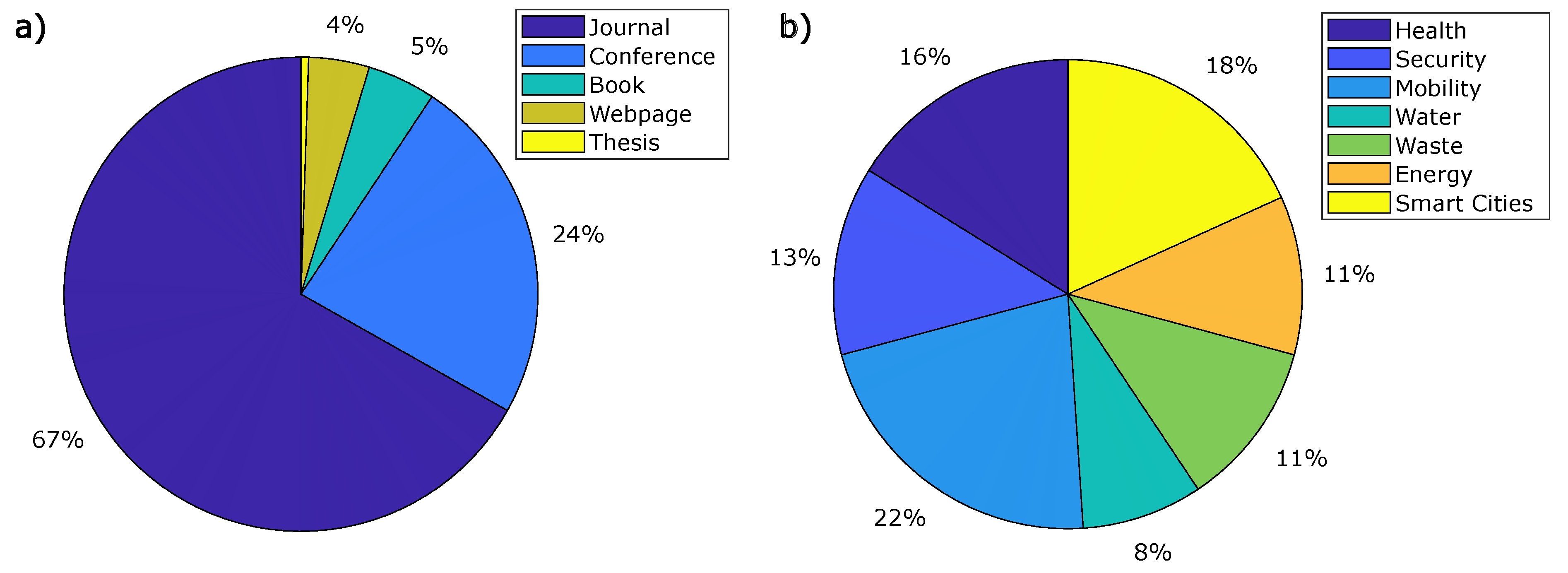
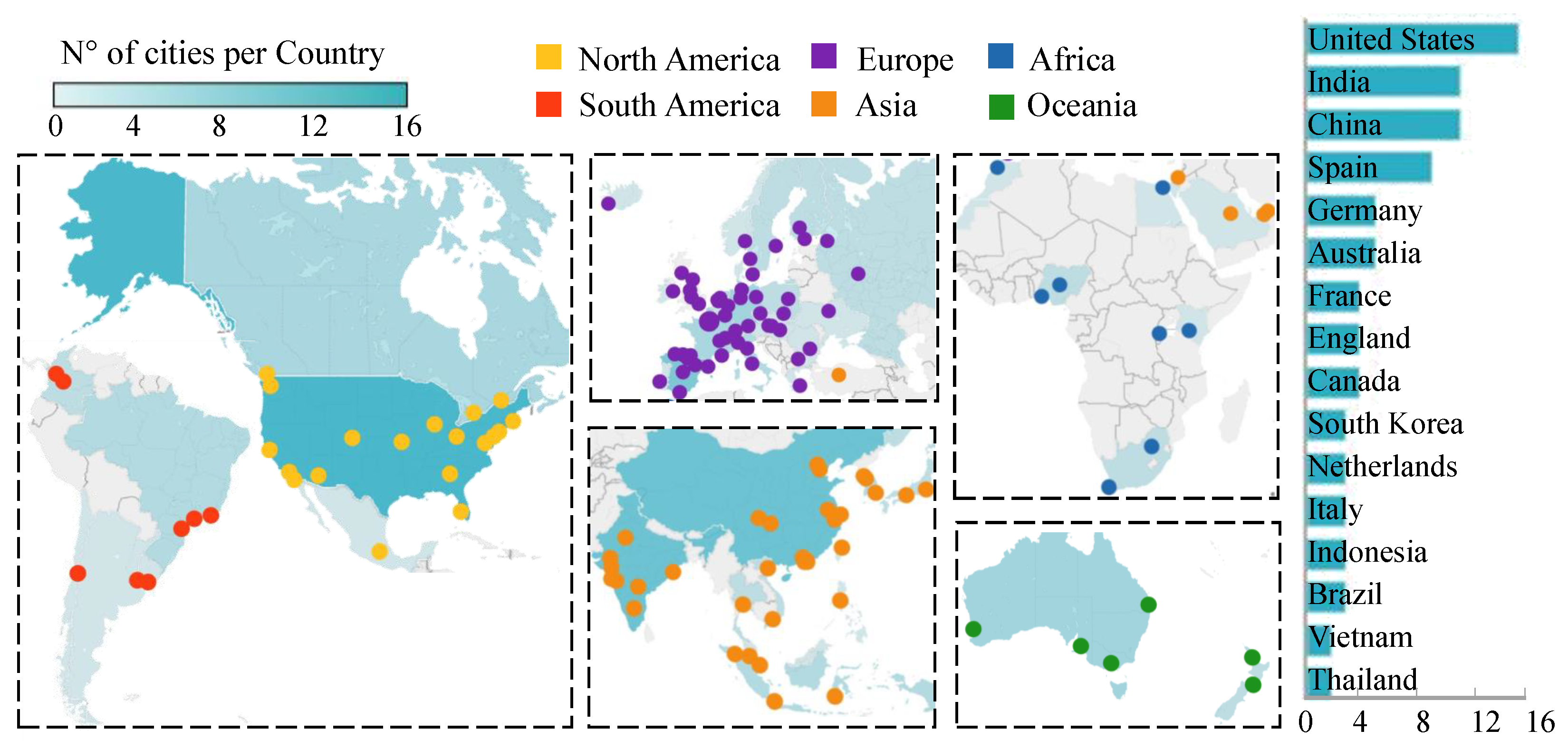
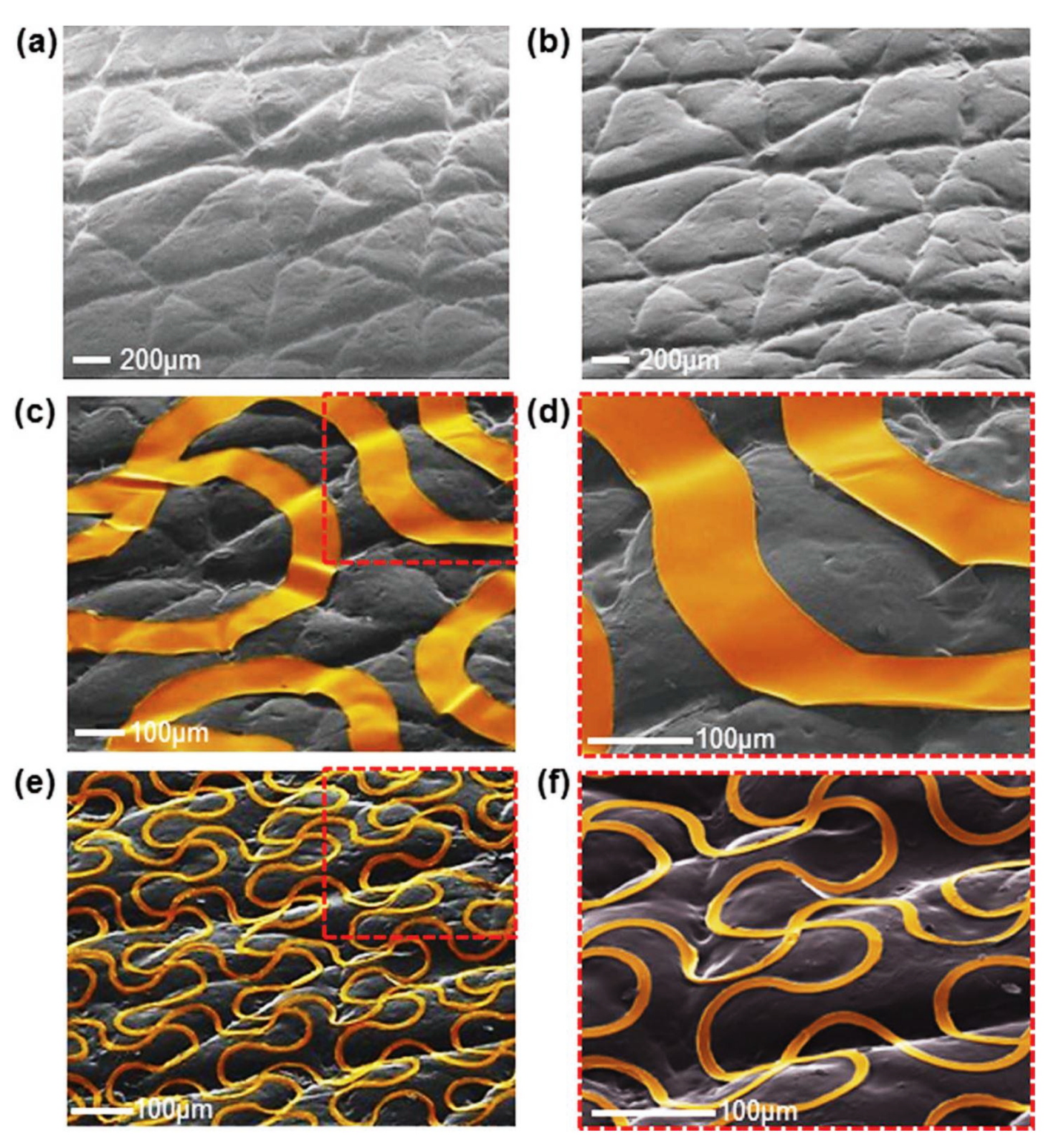
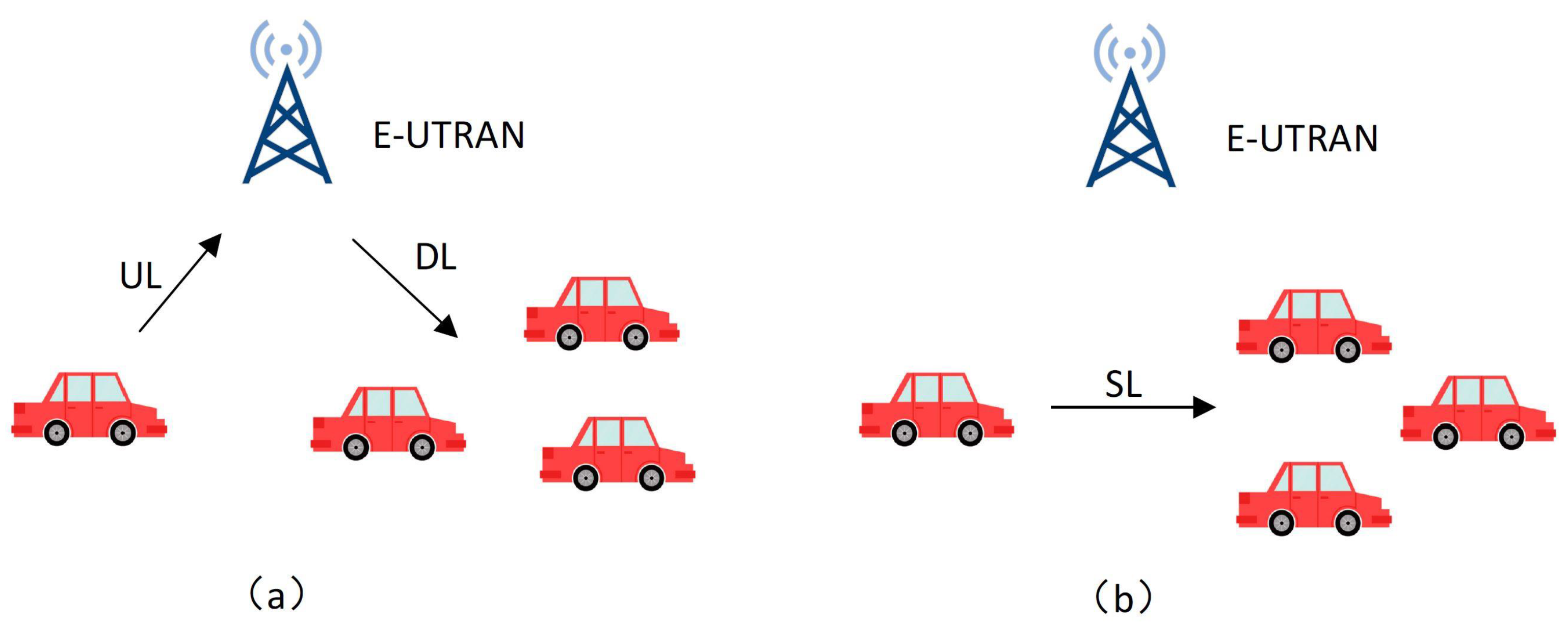
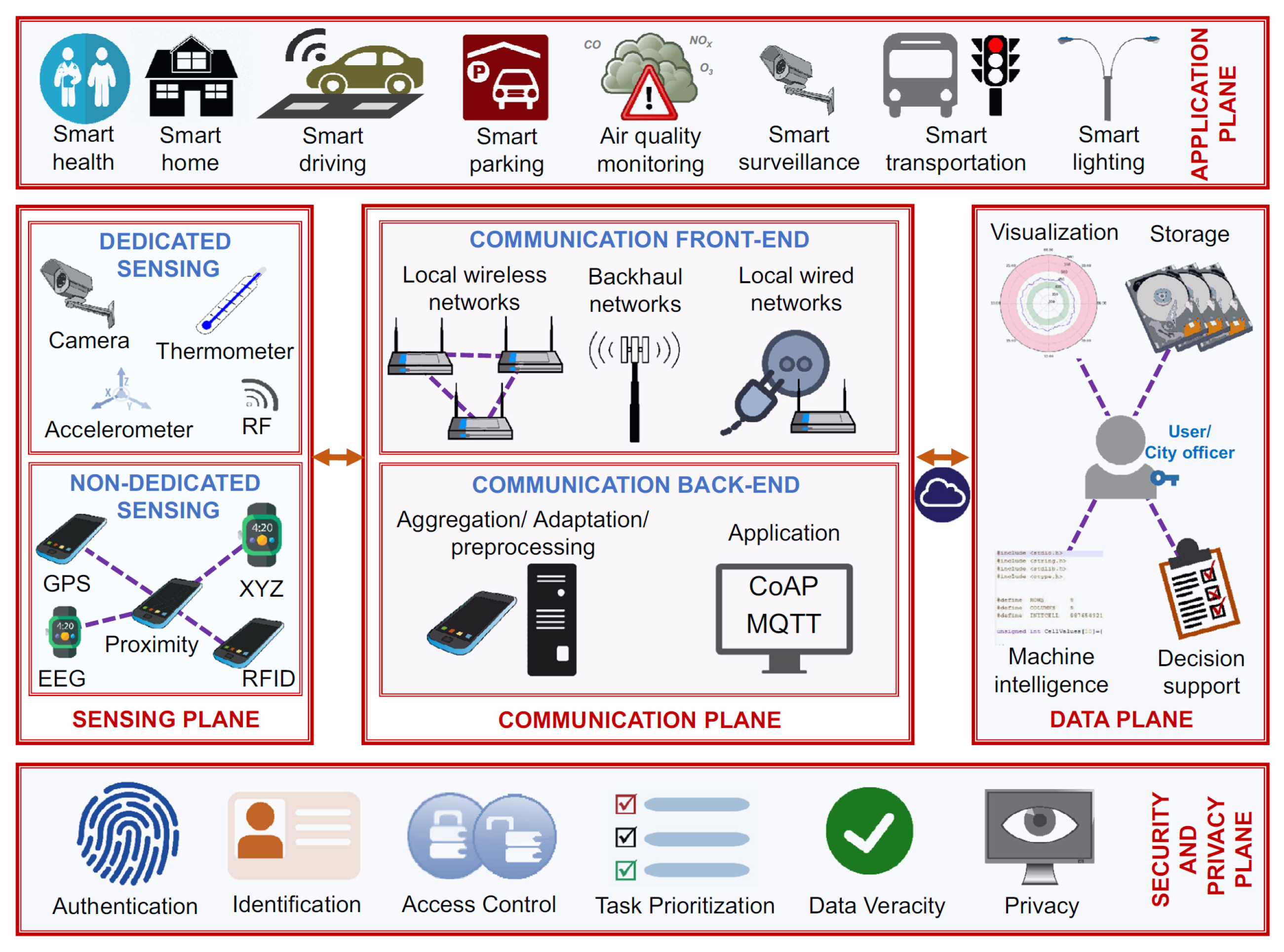
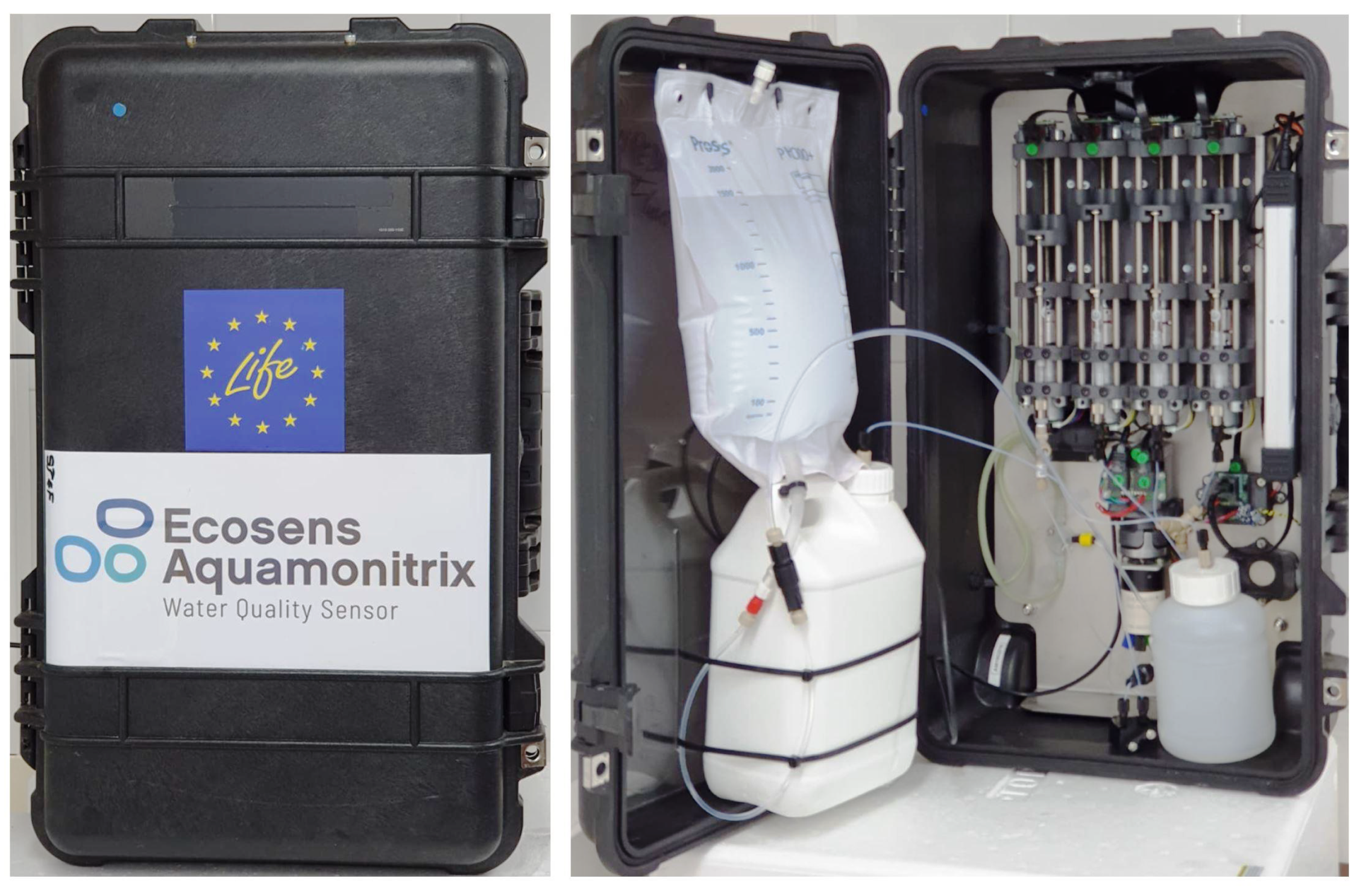
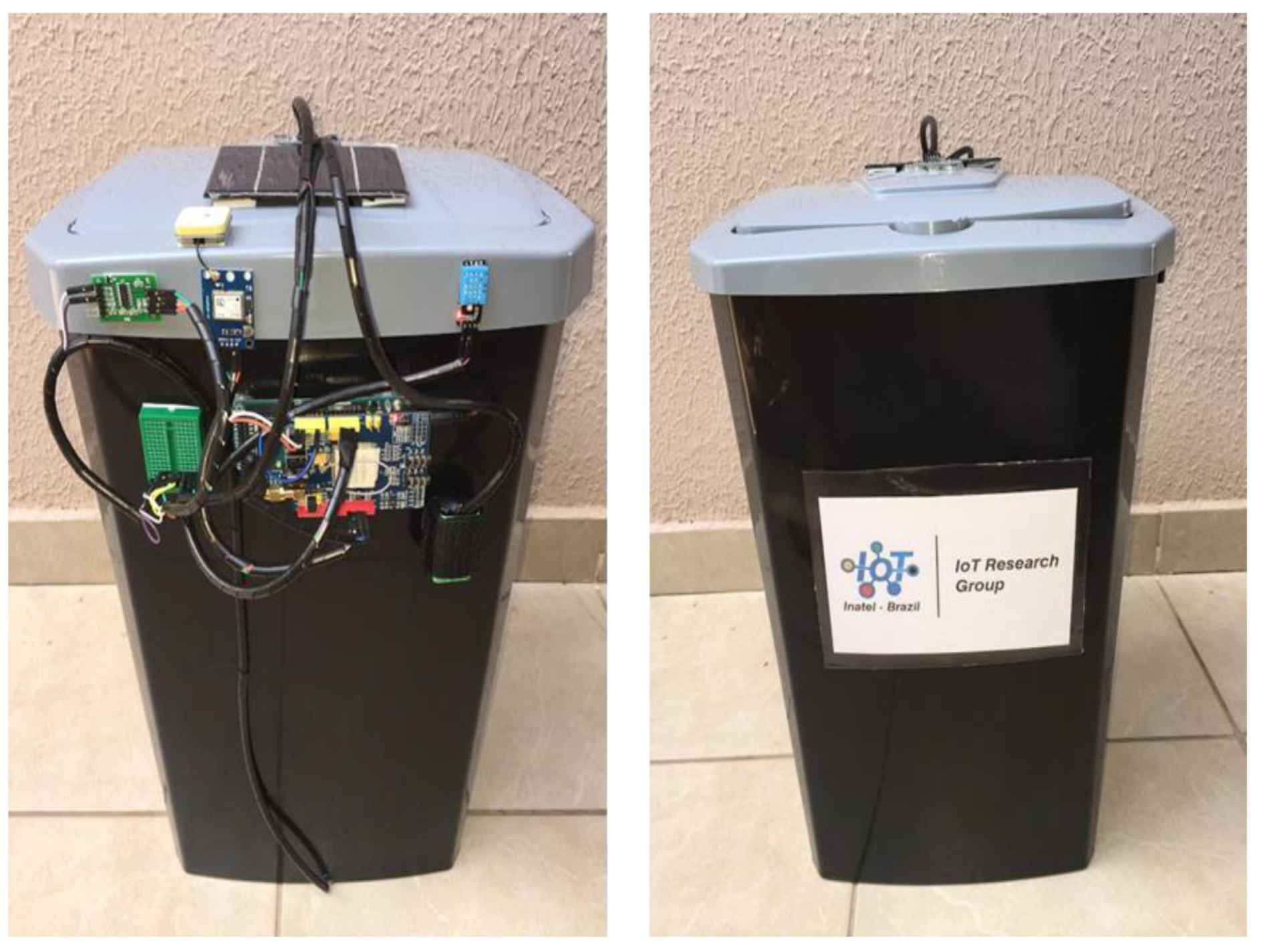
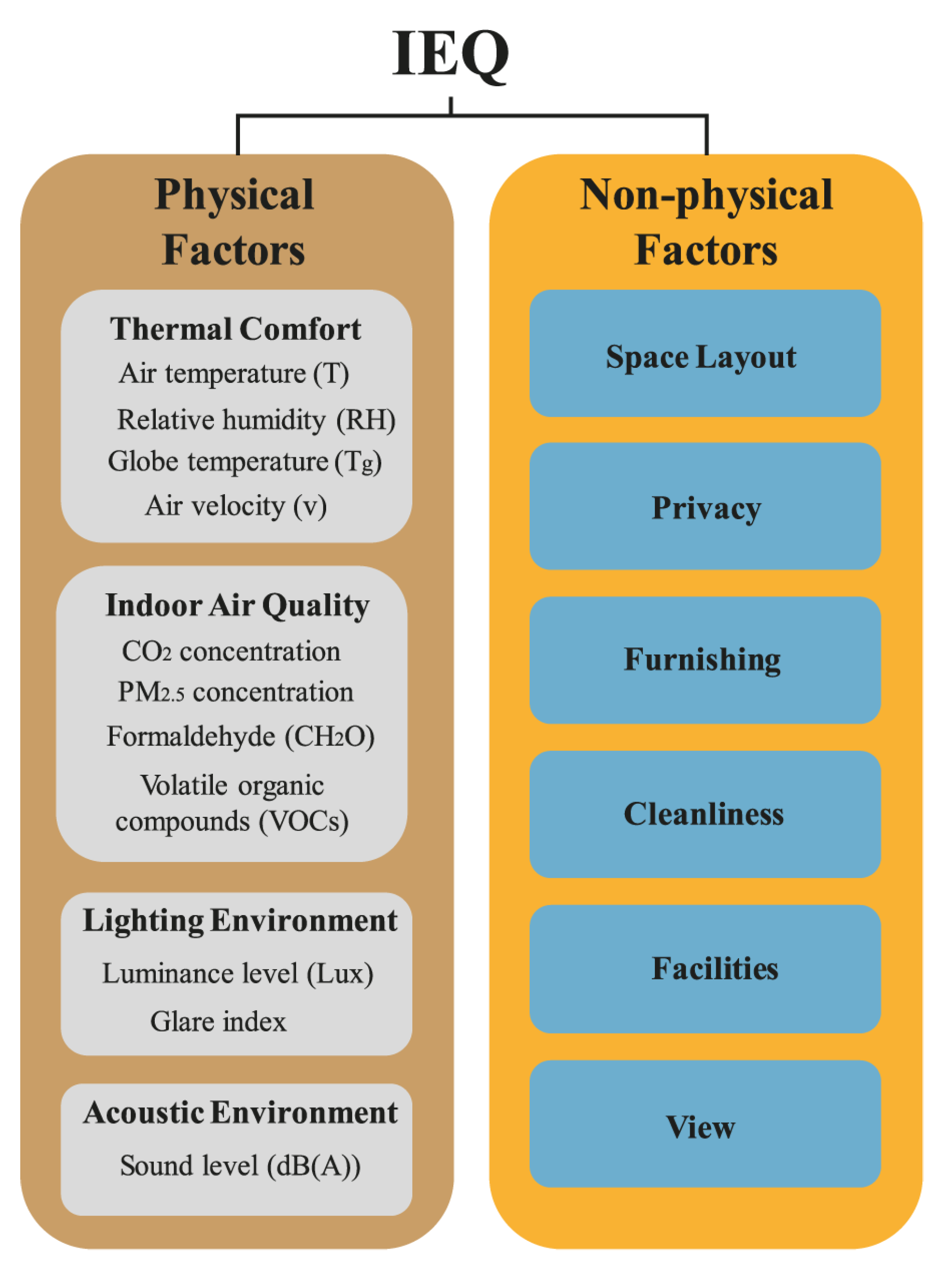
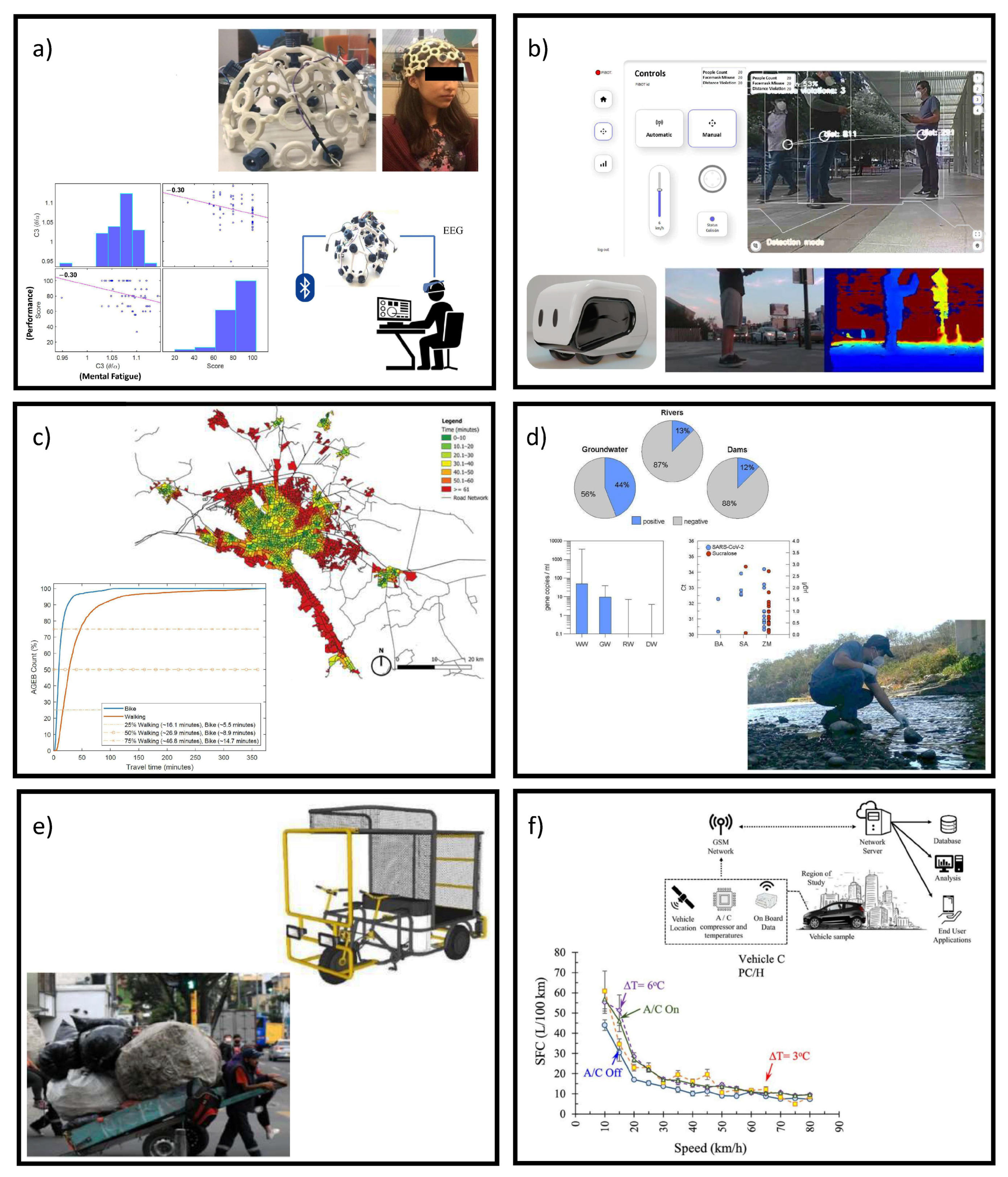
| City | Health | Security | Mobility | Water | Waste | Energy |
|---|---|---|---|---|---|---|
| Tampere [27] | Smart transportation | |||||
| Helsinki [25] | Car charging facilities | Automated waste collection | Smart grids | |||
| Amsterdam [4] | ICT in health, Health Lab | Clean energy generation | ||||
| Vienna [27] | Smart parking, car sharing | Energy efficiency | ||||
| Copenhagen [4] | Bike lane network | Water quality monitoring | Optimized waste disposal | Energy efficiency | ||
| Stockholm [4] | Water management policies | Waste management system | ||||
| Milton Keynes [25] | Smart parking, MotionMap app | Sensors in recycling centers | Smart metering app | |||
| London [27] | App for public transport | Smart Waste collection | ||||
| Malaga [4] | Electric vehicles, charging stations | Smart grids, clean energies, smart lighting | ||||
| Barcelona [4] | Remote healthcare | Incident detectors at home | Traffic and public transport management | Smart Containers | Centralized heating/cooling | |
| Santander [26] | Smart Parking, GPS monitoring | Smart park irrigation | Smart public lighting | |||
| Paris [4] | eHealth, smart medical records | Bike sharing, charging stations | ||||
| Geneva [27] | Smart transportation | Fiber-optic, smart grid networks | ||||
| Singapore [33] | Siren alerts for natural disasters | Traffic maps, public transport apps | Apps for water consumption tracking | Apps for energy consumption tracking | ||
| Hong Kong [4,27] | Smart card IDs for citizens | Open, real-time traffic data | Smart waste management | |||
| Shanghai [28,37] | Pedestrian movement analysis (Big data) | |||||
| Beijing [28,38] | V2E solutions, smart cards for transportation | |||||
| Songdo [25,27] | Remote medical equipment and checkups | Self-charging electric vehicle technology | Underground waste suction system | Smart buildings | ||
| Seoul [27] | Bus service based on data analytics | |||||
| Taiwan [39] | Smart defense system for law enforcement | |||||
| Indonesia [33] | Flood monitoring and report app | |||||
| Thailand [33] | Tsunami and flood monitoring | Water management app | ||||
| India [4] | Smart transport systems | Clean energy, green buildings | ||||
| Toronto [28] | Smart urban zone growth | |||||
| New York [27] | Sensors deployment after 9/11 attacks | Energy efficiency using LEDs | ||||
| Washington DC [27] | Bike sharing, smart stations | Sensor-based LED streetlights | ||||
| Seattle [25] | Flood monitoring, law-enforcement cameras, gunshots GPS tracking | Smart trafic lights | Real-time precipitation monitoring | Reduction of CO emissions | ||
| Medellin [30] | Outdoor electric stairs and air wagons | |||||
| Rio de Janeiro [31] | GPS/video monitoring installation in police cars | Traffic monitoring using cameras | ||||
| Melbourne [27] | Smart parking, open urban planning, metro Wi-Fi | Energy efficiency, smart grid, smart lighting | ||||
| Perth [40] | Cyber-security and digital forensics | |||||
| Sydney [32] | ICTs in daily urban transport | |||||
| Brisbane [32] | Pedestrian spines | |||||
| Adelaide [32] | Wired communities |
| Sources of | Energy Consumption | Variable | Sensor | Application |
|---|---|---|---|---|
| Air Conditioning | Heat/Cooling | Temperature/Humidity | Thermohydrometer | Temperature and relative humidity |
| CO/CO | CO/CO Concentrations | |||
| Indoor Air Quality | Air pollution/Concentration | NO/NO | NDIR (Non-Dispersive Infrared) | NO/NO Concentrations |
| Air renovations | VQT airflow | HVAC system/equipment, building automation, vents | ||
| Presence | Passive Infrared (PIR) | Count/Occupation/Movement of people and vehicles/Temperature/Security | ||
| Lighting | Indoor/Outdoor | Light | Light Depending Resistor (LDR) | Color/Resistance/Security alarms, Lighting On/Off |
| Brightness Illumination | Phototransistor Photodiode | Home networks, Wi-Fi LED luminaires/Indoor lighting apps/Proximity Light level |
Publisher’s Note: MDPI stays neutral with regard to jurisdictional claims in published maps and institutional affiliations. |
© 2021 by the authors. Licensee MDPI, Basel, Switzerland. This article is an open access article distributed under the terms and conditions of the Creative Commons Attribution (CC BY) license (https://creativecommons.org/licenses/by/4.0/).
Share and Cite
Ramírez-Moreno, M.A.; Keshtkar, S.; Padilla-Reyes, D.A.; Ramos-López, E.; García-Martínez, M.; Hernández-Luna, M.C.; Mogro, A.E.; Mahlknecht, J.; Huertas, J.I.; Peimbert-García, R.E.; et al. Sensors for Sustainable Smart Cities: A Review. Appl. Sci. 2021, 11, 8198. https://doi.org/10.3390/app11178198
Ramírez-Moreno MA, Keshtkar S, Padilla-Reyes DA, Ramos-López E, García-Martínez M, Hernández-Luna MC, Mogro AE, Mahlknecht J, Huertas JI, Peimbert-García RE, et al. Sensors for Sustainable Smart Cities: A Review. Applied Sciences. 2021; 11(17):8198. https://doi.org/10.3390/app11178198
Chicago/Turabian StyleRamírez-Moreno, Mauricio A., Sajjad Keshtkar, Diego A. Padilla-Reyes, Edrick Ramos-López, Moisés García-Martínez, Mónica C. Hernández-Luna, Antonio E. Mogro, Jurgen Mahlknecht, José Ignacio Huertas, Rodrigo E. Peimbert-García, and et al. 2021. "Sensors for Sustainable Smart Cities: A Review" Applied Sciences 11, no. 17: 8198. https://doi.org/10.3390/app11178198
APA StyleRamírez-Moreno, M. A., Keshtkar, S., Padilla-Reyes, D. A., Ramos-López, E., García-Martínez, M., Hernández-Luna, M. C., Mogro, A. E., Mahlknecht, J., Huertas, J. I., Peimbert-García, R. E., Ramírez-Mendoza, R. A., Mangini, A. M., Roccotelli, M., Pérez-Henríquez, B. L., Mukhopadhyay, S. C., & Lozoya-Santos, J. d. J. (2021). Sensors for Sustainable Smart Cities: A Review. Applied Sciences, 11(17), 8198. https://doi.org/10.3390/app11178198












